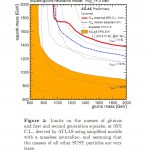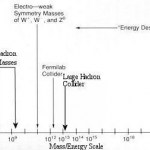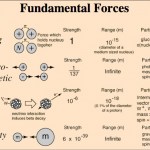Particle Physics
Here are some more unsung heroes of research: scanners (the human kind). In the 1950s, Donald Glaser invented the bubble chamber – a way to track infinitesimally small quantum particles as they winked in and out of existence. The idea – which may or may not have been tested in beer – was to create a large chamber of liquid under pressure next to a particle accelerator. As the beams hit their target, producing sprays of new types of short-lived particles, these energetic particles would leave tracks of bubbles in the liquid (usually hydrogen). Everything was caught on arrays of special high-…
"[S]cience is not a consumption good to be expanded in good times and restricted in bad times. The doing of science as well as the supporting of science is an expression of faith in the future. It would have been possible to have told Newton and Faraday, Maxwell and Einstein, Bohr and Heisenberg that, given the poverty and squalor around them, their research were luxuries which could not be afforded. To have done so would be to destroy the economic c progress that came out of their science and which was the main factor in relieving that poverty and squalor. We seem to be on the verge of…
“Faultily faultless, icily regular, splendidly null, dead perfection; no more” -Lord Alfred Tennyson
Ahh, the Standard Model of elementary particles and their interactions. It's right up there with General Relativity -- our theory of gravitation in the Universe -- as the most successful physical theory of all-time.
Image credit: DoE, NSF, LBNL, and CPEP, via http://www.cpepphysics.org/.
While General Relativity describes the relationship between matter-and-energy and spacetime, the Standard Model describes all the known particles in the Universe and how they interact with one another…
“Supposedly she’d died, but here she was again–somewhat changed, but you couldn’t kill her. Not when the truest part of her hadn’t even been born.” -Denis Johnson
Over the past 100 years, our picture of the Universe has changed dramatically, on both the largest scales and the smallest.
Image credit: Richard Payne.
On the large-scales, we've gone from a Newtonian Universe of unknown age populated only by the stars in our own Milky Way to a Universe governed by General Relativity, containing hundreds of billions of galaxies.
Image credit: Rhys Taylor, Cardiff University.
The age of this…
"...this consensus has been brought about, not by shifts in philosophical preference or by the influence of astrophysical mandarins, but by the pressure of empirical data." -Steven Weinberg
One of the most fundamental questions we could ever ask about all of existence is "What makes up the Universe?"
Image credit: Misti Mountain Observatory.
I don't mean "stars and galaxies," like you see above. That might make up the Universe on the largest scales, but that's taking a look at the question of what the fundamental constituents of the Universe compose themselves into.
The other side of the…
"The particle and the planet are subject to the same laws and what is learned of one will be known of the other." -James Smithson
The entirety of the known Universe -- from the smallest constituents of the atoms to the largest superclusters of galaxies -- have more in common than you might think.
Image credit: Rogelio Bernal Andreo of http://blog.deepskycolors.com/about.html.
Although the scales differ by some 50 orders of magnitude, the laws that govern the grandest scales of the cosmos are the very same laws that govern the tiniest particles and their interactions with one another on the…
"Science enhances the moral value of life, because it furthers a love of truth and reverence—love of truth displaying itself in the constant endeavor to arrive at a more exact knowledge of the world of mind and matter around us, and reverence, because every advance in knowledge brings us face to face with the mystery of our own being." -Max Planck
Our standard model of elementary particles and forces -- with the recent discovery of the Higgs boson now behind us -- has now had every expected particle within it discovered, and we can explain where the elementary particles get their masses…
"Even if there is only one possible unified theory, it is just a set of rules and equations. What is it that breathes fire into the equations and makes a universe for them to describe?" -Stephen Hawking
After a long search spanning more than my entire lifetime (so far), the Higgs boson has finally been discovered at both detectors -- CMS and ATLAS -- at the Large Hadron Collider at CERN.
Image credit: CERN / Particle Physics for Scottish Schools.
For a little more on this, check out the earlier posts here celebrating Higgs week:
The Biggest Firework of them all: The Higgs
How the…
At age 28, theoretical physicist Dr. Zohar Komargodski became head of a research group in the Institute's Particle Physics and Astrophysics Department. A recent paper, published with Prof. Adam Schwimmer of the Physics of Complex Systems Department, made some waves in the physics world with a proposed proof of a 23-year-old theorem. If the proof stands, it will have implications for many fields, including the analysis of LHC results and supersymmetry. Komargodski and Schwimmer claim they had been kicking around various ideas for a proof for several years before the solution came to them -…
The Weizmann Institute's Prof. Eilam Gross is currently the ATLAS Higgs physics group convener. He originally wrote this piece in Hebrew for the Yediot Aharonot daily.
The Best There Is - For Now
"The God Particle," as the Higgs boson is often called, comes from the title of the book by Nobel laureate Leon Lederman that deals with the search for the elusive particle. This particle, according to the Standard Model of Particle Physics, is responsible for giving mass to all of the elementary particles in nature.
The mass of an electron determines the size of a hydrogen atom; ultimately the size…
The physics book generating the most bloggy buzz in the latter part of 2010 would have to be Ian Sample's Massive: The Missing Particle that Sparked the Greatest Hunt in Science, about the as yet undetected particle known as the Higgs boson. Detecting the Hiigs is the most immediate goal of the Large Hadron Collider, so it's a topic that's in the air at the moment, so this book was inevitable-- in fact, the publisher sent me not one but two review copies. I gave one away, but that makes me feel even more guilty for taking months to get around to reviewing it.
This is, basically, a concise…
I've reached a point in the book-in-progress where I find myself needing to talk a little about particle physics. As this is very much not my field, this quickly led to a situation where the dog asked a question I can't answer. But, hey, that's why I have a blog with lots of smart readers...
The question is this:
What are all these extra particles for?
Or, to put it in slightly more physics-y terms: The Standard Model contains twelve material particles: six leptons (the electron, muon, and tau, plus associated neutrinos) and six quarks (up-down, strange-charm, top-bottom). The observable…
Most of what would ordinarily be blogging time this morning got used up writing a response to a question at the
Physics Stack Exchange. But having put all that effort in over there, I might as well put it to use here, too...
The question comes from a person who did a poster on terminology at the recently concluded American Geophysical Union meeting, offering the following definition of "data":
Values collected as part of a scientific investigation; may be qualified as 'science data'. This includes uncalibrated values (raw data), derived values (calibrated data), and other transformations of…
It's the last week of the (calendar) year, which means it's a good time to recap the previous twelve months worth of scientific news. Typically, publications like Physics World will publish a list of top ten physics stories of 2010, but we're all Web 2.0 these days, so it seems more appropriate to put this to a poll:
What is the top physics story of 2010?survey software
I've used the Physics World list as a starting point, because you have to start somewhere. I added a few options to cover the possibility that they left something out, and, of course, you know where the comments are.
This…
Let's talk about the God Particle.
It strikes me that people refer to the Higgs boson as the "God particle" in the same way some call the iPhone the "Jesus phone": with an almost pointed disregard for what such a prefix actually means. Considering the intensity of the culture wars, the popularity of the moniker is baffling. Is this about contextualizing the abstraction (and grandeur) of particle physics in a way "regular" people can understand? Does this represent a humanist concession to the religious? If so, can religious culture really be swayed by such a transparent ploy -- y'know, it…
Earlier this week, there was some interesting discussion of science communication in the UK branch of the science blogosphere. I found it via Alun Salt's "Moving beyond the 'One-dinosaur-fits-all' model of science communication" which is too good a phrase not to quote, and he spun off two posts from Alice Bell, at the Guardian blog and her own blog, and the proximate cause of all this is a dopey remark by a UK government official that has come in for some justifiable mockery.
Bell and Salt both focus on the narrowness of the "dinosaurs and space" approach-- a reasonably representative quote…
In the comments following the silly accelerator poll, onymous wrote:
[T]he point of the LHC isn't to discover the Higgs. No one in their right minds would build a 14 TeV pp collider if their only goal was to discover the Higgs.
While it's true that the ultimate goal of the LHC is to discover more exotic particles that may or may not exist (blah, blah, supersymmetry, blah) most of the hype has focussed on the Higgs, which is the one thing they're pretty sure they'll find (comments later in that thread notwithstanding). This is one of the potential problems with the way the machine has been…
The big physics story at the moment is probably the new measurement of the size of the proton, which is reported in this Nature paper (which does not seem to be on the arxiv, alas). This is kind of a hybrid of nuclear and atomic physics, as it's a spectroscopic measurement of a quasi-atom involving an exotic particle produced in an accelerator. In a technical sense, it's a really impressive piece of work, and as a bonus, the result is surprising.
This is worth a little explanation, in the usual Q&A format.
So, what did they do to measure the size of a proton? Can you get rulers that small…
The Science Channel debuted a new show last night, Through the Wormhole with Morgan Freeman, with the premier apparently designed by committee to piss off as many Internet types as possible. The overall theme was "Is there a creator?" and it featured physicist-turned-Anglican-priest John Polkinghorne talking about fine-tuning but no atheist rebuttal. It spent a good ten minutes on Garrett Lisi and his E8 theory, making it sound a whole lot more complete than it is. And it got this aggressively stupid review in the Times:
Oh, let's face it: it was hard to concentrate on the first half of the…
Since I was going to be down here anyway to sign books at the World Science Festival Street Fair, Kate and I decided to catch one of the Saturday events at the Festival. It was hard to choose, but we opted for the program on Hidden Dimensions: Exploring Hyperspace (Live coverage was here, but the video is off), because it was a physics-based topic, and because I wrote a guest-blog post on the topic for them.
(No, we didn't go to the controversial "Science and Faith" panel, opting instead to have a very nice Caribbean dinner at Negril Village, just around the corner. I'll take excellent…









